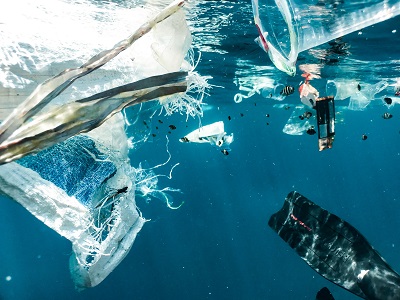Microplastics and Plastic Pollution in Oceans
Written by Mantsha, by grade 9 student.
Microplastics are very small pieces of plastic that pollute the environment. They are so small that we can’t see them with a naked eye and could have a length less than 5 millimeters (about the size of small cumin – jeera – seed).
Written by Mantsha, by grade 9 student
This article was written in August 2020
What are microplastics?
Microplastics are very small pieces of plastic that pollute the environment. They are so small that we can’t see them with a naked eye and could have a length less than 5 millimeters (about the size of small cumin – jeera – seed).
These little pieces of plastics are very harmful and are now a big concern for the environment, as they are polluting oceans and rivers.
How does plastic reach to the ocean?
Plastic or microplastics reach the ocean by following ways:
- From rivers
- Illegal dumping activities
- From transport
- Industrial Waste

Why are they harmful?

Plastic pollution is harmful because they get into the stomachs of fishes and other water animals and get stuck there, causing them to starve and die. Also, plastic is now sinking to the bottom of the oceans and settling on the ocean floor.
What are microplastics made up of?
Microplastics are made of very, very small pieces of plastic.
What is the problem with microplastic?
Microplastics are so small that they pass through water systems to teach the oceans, where they cause pollution. They come from many sources – for example when larger plastics waste degrades into smaller pieces. Drinks bottles are one of the most common types of plastic waste. Approximately 480 billion plastic bottles were sold all over the world in 2016 – that comes to a million bottles per minute!
Also, microbeads (which is again a kind of microplastic) are a great source of pollution – these are really small pieces of polyethylene plastic which are found in some health and beauty products, like some cleansers and toothpaste. These tiny particles easily pass through water filtration systems and end up in the oceans and lakes.
How does it impact humans?
It affects humans because now plastics are reaching oceans and water bodies which is killing the water animals. This can have serious effects on the aquatic ecosystems and balance in the oceans. Secondly, if we don’t take this seriously then one day there will be islands of plastics in water bodies instead of land islands.
Why should we pay attention to it?
Plastic pollution is a serious issue. It is estimated that about eight million tonnes of plastic waste gets into the world’s oceans each year, say, scientists. We should pay attention to it because it’s about our environment, our world, and about our habitat, which is the most important thing for us because if we stop taking care of our environment then it will be difficult for us to live here.





Comments